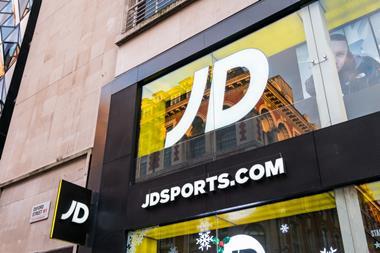Retailers make grand statements about how customer-centric their businesses are, but where can customer intelligence make the difference to top and bottom lines, asks Joanna Perry
Exclusive whitepapers for Retail Week readers
- Smart customer centricity: The analytical advantage
- Size Optimisation for Retailers: How to effectively stock sizes of each item in each store – into a profitable advantage
- SAS Solutions for the Grocery Industry
Historically, customer insight has been used almost exclusively within marketing.
The dilemma is that the marketing department sees itself as the guardian of customer data, but that data can also be used to generate insight in other parts of the business. The challenge is to understand where and how.
SAS business development director for its retail practice Richard Cooper says that to the average retail buyer or merchandiser it might not mean much that Mrs Smith buys two dozen eggs every Monday, but using analytical systems you can produce insight on trends that will provide valuable information.
He explains: “Instead of pre-defined data to cluster stores for range planning, you can use SAS technology to decide the clusters based upon customers who shop in different stores.”
This can feed through into a retailer’s pricing and promotional strategies. And using customer insight can assist with moving from cluster-specific to store-specific decision making, such as creating store-specific planograms.
Across the chain
This is what European grocery chain SOK is doing, feeding forecasts based on insight from individual stores not just to its buyers and merchandisers, but all along its supply chain to reduce costs and improve efficiency.
It’s not just head office that feels the benefit of this. If it means that the forecasting and replenishment decisions are based on good insight, store managers will too, because they can trust the decisions being made in head office and aren’t tempted to override them.
The next stage of optimisation within buying and merchandising departments is all about price, markdown and promotions management. Retailers in Europe - as opposed to North America, where optimisation systems are more prevalent - have treated these systems with some scepticism, but they are increasingly becoming of greater interest because they realise that their decisions must be right first time, as well as made quickly.
It’s not just what and how much you sell that customer insight can assist with. JD Sports is one retailer that is beginning to make more use of a variety of data streams to help it plan and optimise its store estate. It wants to have sales forecasting accurate enough to be able to make the right decisions on its future store strategy, whether the decisions be on new stores, relocations, refurbishments or closures.
The sportswear retailer also uses customer feedback gathered by shopping research firm Retail Eyes, to help tune its store experience to what customers want. Retail Eyes chief executive Tim Ogle says that JD Sports has driven up its net promoter score substantially by using insight from the customer panel to go back to basics and understand the kind of people the retailer should employ.
Ogle adds: “Processes and operational aspects such as availability are a given - it is all about staff being well trained and also enthusiastic.”
Team reward for service
Carphone Warehouse has taken this idea of measuring customer feedback and run with it. It uses customer insight to derive net promoter scores not just for the business as a whole, but individual stores and even members of staff. As a result, it has been able to change its remuneration model for store staff from one where they receive sales commission to one with a higher basic wage and a team reward that is dependent on how their customer service is rated.
Mining speech
Another area where analysis of customer data can have a major impact is in a retailer’s contact centre. Phil Boothroyd, managing consultant at contact centre services provider
Vertex, says: “We use technology that allows us to record the whole call.
In addition to the notes agents can take, we can mine the speech - looking for words such as delivery and so on - and to an extent it can detect the emotion of the caller through the intensity of their voice.”
Collating this information will allow a retailer to determine some of the underlying and less obvious reasons why customers are ringing up in the first place. Boothroyd gives an example: “If it is a multichannel retailer and you find that there is an issue on a product, but only when it is sold online, this allows you to identify if it is an issue with the quality of the product, or just the way it is described on the website.”
He adds: “The more we use the tools, the more metrics we produce. We must make sure we pick up on things that really matter; those that are key to customer satisfaction.”
As retailers begin to wake up to the power of customer insight throughout their organisation, they will also have to think about how they integrate it into their business processes. Cooper says, for instance, that once a retailer moves to more store-specific planograms it is crucial to use customer data to help build them automatically, because to create them manually is
too onerous.
“If you previously used nine clusters, and your customer data says that you need 40, then you have to be able to cope with that,” he explains. For other job roles this may be less about automation and more about giving staff access to customer insight at their fingertips. One way of doing this is with dashboards - single screens that present up-to-the-minute, top-line information that is tailored and
relevant to the role of the person viewing it. For a chief executive, it might be sales, net promoter score, and margins; for an ecommerce director, how many customers are coming to the site
and not buying. For a merchandiser, it might be social class and buying habits of customers in a particular group of stores.
“They are a nice way to present the data, so dashboards will become more prevalent. But the bigger issue is that retailers, with all their sources of data, have to be able to interpret it and turn it into actionable information. That’s the real challenge,” says Cooper.
He adds that a director can look at a dashboard, and say that everything is good, but a dashboard can mask potential issues at a lower level.
Paul Mason Consulting chief operating officer Huw Thomas thinks that while people talk about dashboards on a PC, actually most retail executives are on the move, and so what’s helpful is an automated SMS or email providing figures on sales, volumes, profits and so forth. This, he believes, is a more useful replacement for the stacks of paper at the Monday morning meeting.
However retailers choose to go about delivering the insight they can generate from customer data to staff, the one certainty is that no business can afford to think only once a week on a Monday morning about how its customers are behaving and what they are saying.
In the next few years, retailers such as Carphone Warehouse and JD Sports, that make customer insight an integral part of their decision making processes across their organisation, will find it easier to differentiate themselves from the competition and ultimately to continue to grow profitably.
Know your customer, control your business
- 1
- 2
 Currently reading
Currently readingCustomer-centricity across the enterprise
- 3
- 4
- 5
- 6
- 7
- 8
- 9



































No comments yet